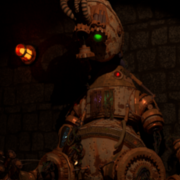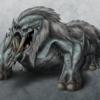Looks like you're responding to collisions by disallowing motion to take place, so any time you're making a collision happen you should lose the ability to move. You don't really want to drive collision response that way. It's better to use input to apply forces to the entity and do some lightweight physics. That is, the entity has a position and a velocity; every update the position has the velocity added to it. The input influences the velocity rather than the position. This gives you access to smoother control and gets you away from the input vs collision problem.
When colliding with 'hard' objects, such as immovable walls, instead of just undo-ing the movement for the frame, determine the voronoi region of interception and change the position to resolve the collision. This will allow you to slide along walls gracefully, etc. This must be done simultaneously for all objects that the entity is colliding with, so...
* move object to new position according to velocity
* create a 'correction' vector and initialize it to 0,0
* for each 'hard' collidable object
** determine the depth of collision along the separating axis
** reverse the penetration vector to get a correction vector for that specific collision
** add it to the overall correction vector
* apply the correction vector directly to the entity's position
In order to detect the separating axis you'll want to use voronoi tesselation. If your walls are orthogonal (square) and axis-aligned then this is quite simple:
012
345
678
4 is 'inside' the wall, the other numbers represent individual voronoi regions for the wall. You can determine the region your entity is in by testing its centerpoint against the edges of the wall:
int region = 0;
if(center.x > wall.left) {region += 1;}
if(center.x > wall.right) {region += 1;}
if(center.y > wall.top) {region += 3;}
if(center.y > wall.bottom) {region += 3;}
In regions 0,2,6, and 8, push directly away from the matching vertex. In region 4 push away from the center of the wall. In the other regions just push in the direction that they represent. For instance, in region 1 you want to push straight upward, etc.
If your walls are not orthogonal and axis-aligned then you'll need to work out the tesselation differently before you can use SAT testing and response. If that's the case just let us know and I'll try to explain the technique. Or if any of this doesn't make sense, I can explain it in more depth.








